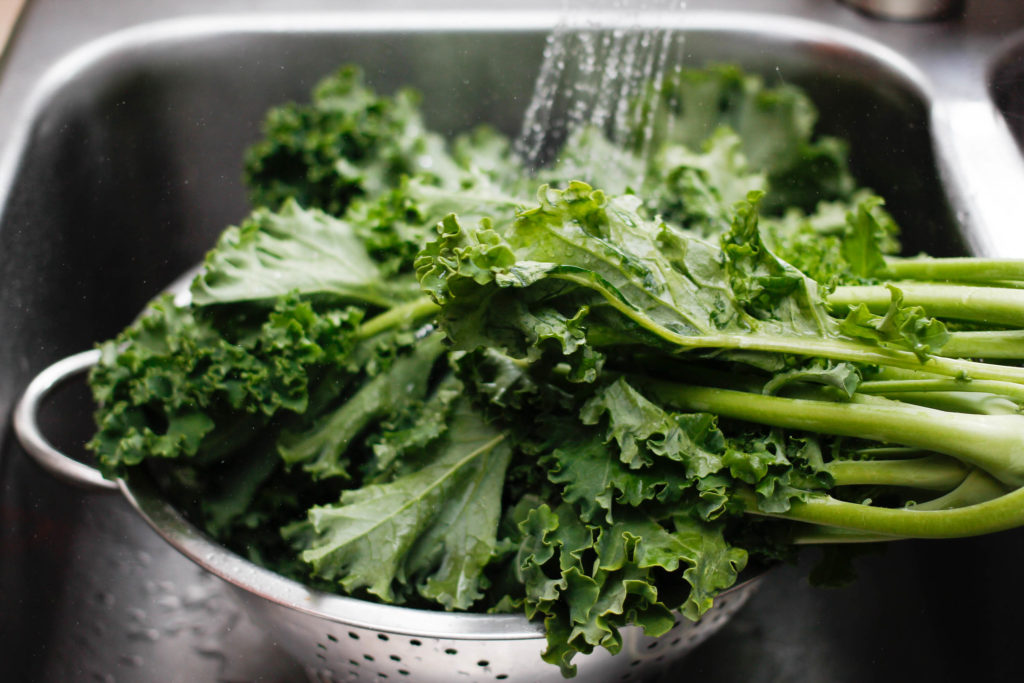Vegetable Spotlight: Kale
go.ncsu.edu/readext?635632
en Español / em Português
El inglés es el idioma de control de esta página. En la medida en que haya algún conflicto entre la traducción al inglés y la traducción, el inglés prevalece.
Al hacer clic en el enlace de traducción se activa un servicio de traducción gratuito para convertir la página al español. Al igual que con cualquier traducción por Internet, la conversión no es sensible al contexto y puede que no traduzca el texto en su significado original. NC State Extension no garantiza la exactitud del texto traducido. Por favor, tenga en cuenta que algunas aplicaciones y/o servicios pueden no funcionar como se espera cuando se traducen.
Português
Inglês é o idioma de controle desta página. Na medida que haja algum conflito entre o texto original em Inglês e a tradução, o Inglês prevalece.
Ao clicar no link de tradução, um serviço gratuito de tradução será ativado para converter a página para o Português. Como em qualquer tradução pela internet, a conversão não é sensivel ao contexto e pode não ocorrer a tradução para o significado orginal. O serviço de Extensão da Carolina do Norte (NC State Extension) não garante a exatidão do texto traduzido. Por favor, observe que algumas funções ou serviços podem não funcionar como esperado após a tradução.
English
English is the controlling language of this page. To the extent there is any conflict between the English text and the translation, English controls.
Clicking on the translation link activates a free translation service to convert the page to Spanish. As with any Internet translation, the conversion is not context-sensitive and may not translate the text to its original meaning. NC State Extension does not guarantee the accuracy of the translated text. Please note that some applications and/or services may not function as expected when translated.
Collapse ▲
Source from Marco Verch via Flickr
What’s leafy, looks bumpy, and green all over? I believe that would be Kale! Which just so happens to be our Vegetable Spotlight for this week!
Kale is a part of the well-known Brassica family, that also includes broccoli, cabbage, and collards. Kale is a cool weather crop, and according to North Carolina State Extension, the kale greens tend to be sweeter when growing in frost of colder weather.
From Montana State University Extension, Kale is packed with amazing beneficial nutrients, boasting great amounts of Vitamins A, C, K, B6. Kale leaves are also a wonderful source of many minerals like Potassium, Calcium, Iron and Manganese. You can enjoy your Kale sautéed in a stir fry, fresh in a salad with a citrus vinaigrette, or roasted in to the ever-so-popular kale chips. Below is a wonderful recipe for a sweet and savory kale dish, Kale with Raisins.However, no matter how you have it, just make sure to include those green bumpy kale leaves onto your plate today!
Kale with Raisins
Ingredients
| 12 cups chopped kale |
| 2 tablespoons walnuts, chopped |
| 1 ½ tablespoons oil |
| 3 cloves garlic, chopped |
| ¼ Cup water |
| ⅛ teaspoon salt |
| ⅛ teaspoon pepper |
| 2 tablespoons raisins, chopped |
Directions
- Wash kale well and trim tough stems. Pile several leaves together and slice into ribbons about 1 inch wide.
- Heat a large, dry skillet and toast chopped nuts for 3 to 5 minutes until fragrant, stirring frequently. Set aside to cool.
- Heat oil in the same skillet and sauté garlic for 1 minute until soft—do not brown.
- Add kale ribbons and ¼ cup water and cover. Cook over medium heat until soft—10 to 15 minutes—adding more water if necessary.
- Add salt, pepper, nuts, and raisins and stir to combine. Allow the remaining liquid to evaporate. Serve.
References:
“Kale” – NC State Extension Publications – NC State Extension




